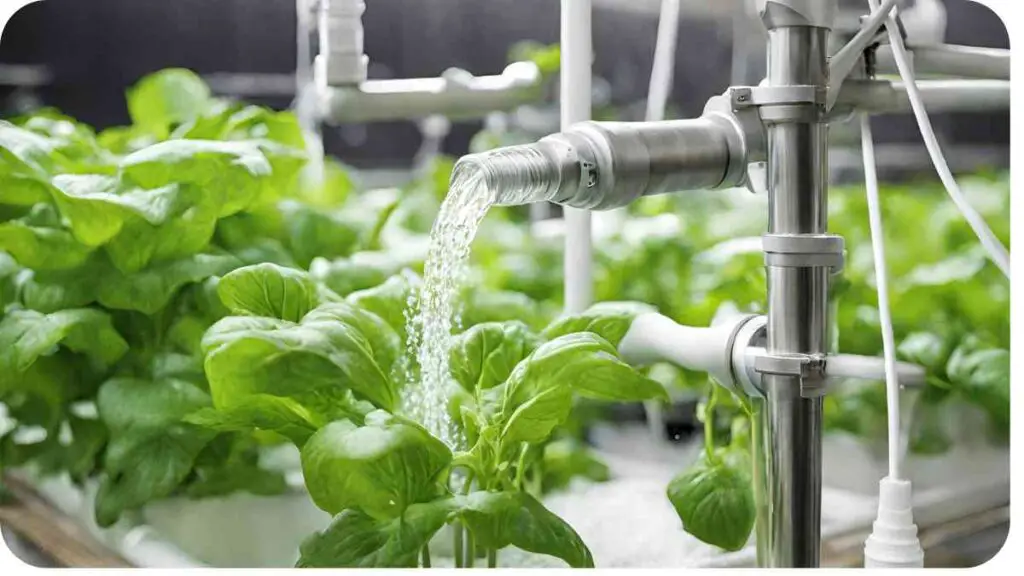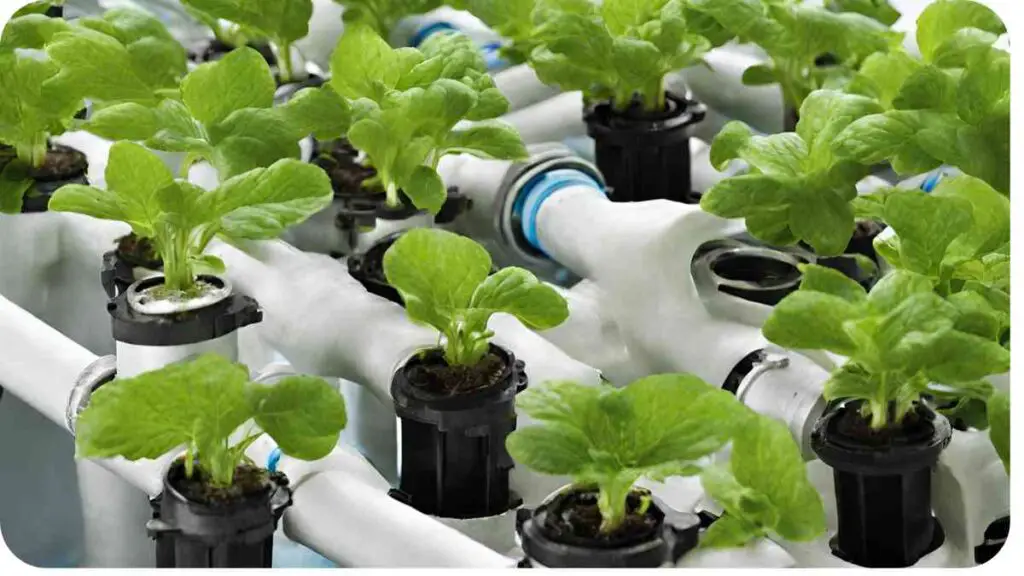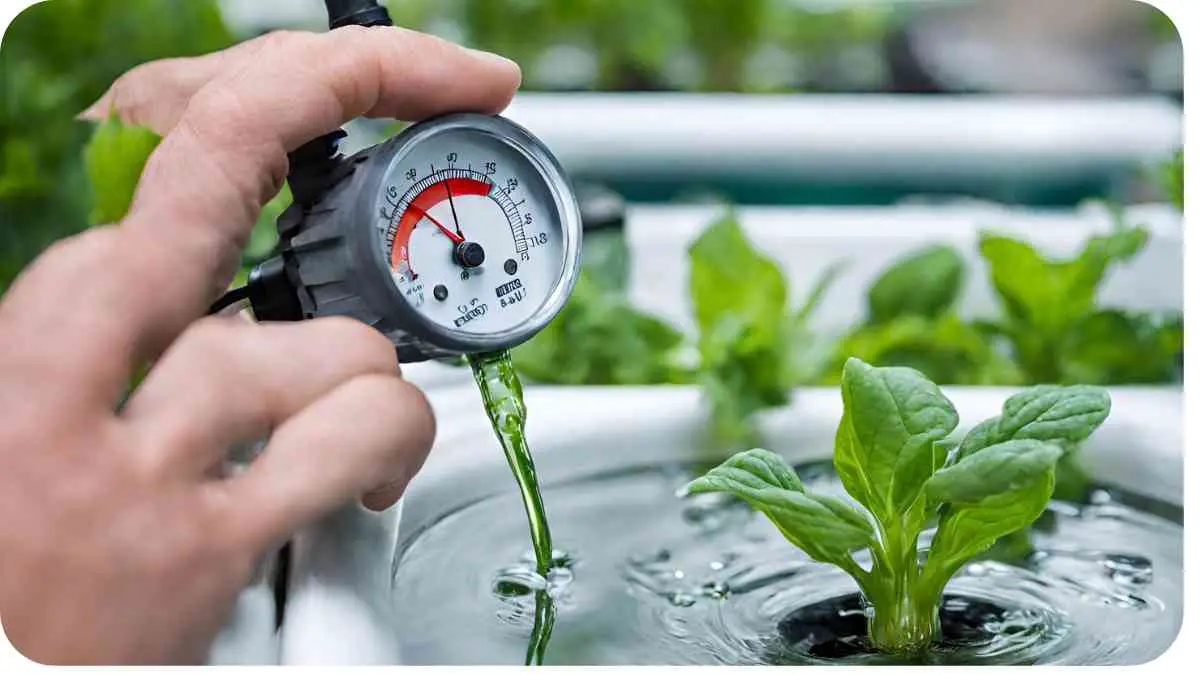Hydroponic systems have revolutionized the way we grow plants, offering efficient and controlled environments for optimal growth. Central to these systems is the hydroponic water pump, which circulates nutrient-rich water to the plants’ roots.
However, ensuring the optimal operating conditions for these pumps is crucial for their longevity and performance. In this article, we’ll delve into the safe running temperature for your hydroponic water pump, exploring why it matters and how you can maintain it effectively.
| Key Takeaways |
|---|
| Maintain a safe operating temperature (65°F to 75°F) for hydroponic water pumps to optimize efficiency and prevent overheating. |
| Regularly monitor water pump temperature and inspect for signs of overheating or inefficiency. |
| Implement cooling methods such as water chillers or heat sinks to regulate temperature and prevent pump failure. |
| Position water pumps away from heat sources and ensure adequate ventilation to facilitate heat dissipation. |
| Proper maintenance, including keeping the pump clean and free of debris, is essential for preventing temperature-related issues and prolonging the lifespan of your hydroponic system. |
2. Understanding Hydroponic Water Pump Temperature

When it comes to hydroponic systems, temperature plays a critical role in the overall health and productivity of your plants. But what about the temperature of the water pump itself? To understand this, let’s consider the factors that influence water pump temperature.
Maintaining proper water levels is crucial for hydroponic success. Understanding water dynamics is key: too much or too little can harm plants.
Factors Affecting Water Pump Temperature
| Factor | Description |
|---|---|
| Pump Efficiency | The efficiency of the water pump directly impacts its heat generation. |
| Ambient Temperature | The temperature of the surrounding environment affects how quickly the pump dissipates heat. |
| Water Volume and Flow | Higher water volumes and flow rates can contribute to increased heat generation within the pump. |
| Pump Placement | The placement of the pump within the hydroponic system can influence its exposure to heat sources. |
Now that we understand what affects water pump temperature, let’s explore the ideal temperature range for optimal performance.
3. Ideal Temperature Range for Hydroponic Water Pumps
Maintaining the correct temperature range for your hydroponic water pump is essential to prevent overheating or inefficiency. Here’s a breakdown of the safe temperature ranges:
Table: Safe Temperature Ranges for Hydroponic Water Pumps
| Temperature Range | Description |
|---|---|
| 65°F to 75°F (18°C to 24°C) | Optimal range for most hydroponic water pumps. |
| Below 65°F (18°C) | Risk of reduced pump efficiency and potential damage. |
| Above 75°F (24°C) | Increased risk of overheating and pump failure. |
Ensuring your water pump operates within this range is vital for maintaining system efficiency and plant health. But what are the risks of operating outside this range?
4. Risks of Operating Outside the Safe Temperature Range
Running your hydroponic water pump at temperatures outside the safe range can lead to several detrimental effects:
- Reduced Efficiency: Higher temperatures can cause pump components to expand, leading to increased friction and decreased efficiency.
- Overheating: Excessive heat can overwhelm the pump’s cooling mechanisms, leading to overheating and potential damage.
- System Failure: Prolonged exposure to extreme temperatures can ultimately result in pump failure, disrupting your entire hydroponic system.
To mitigate these risks, it’s essential to monitor and maintain your water pump’s temperature regularly.
Efficiently monitor your garden’s environment with a reliable weather station. Keeping track of temperature ensures optimal conditions for plant growth.
5. Monitoring and Maintaining Water Pump Temperature
Proper monitoring and maintenance are key to ensuring your hydroponic water pump operates within the safe temperature range. Here are some tips to help you achieve this:
Facing issues with your gardening tools? Troubleshoot pruner jamming with these tips. Keep your equipment running smoothly for a successful garden.
Table: Tips for Monitoring and Maintaining Water Pump Temperature
| Tip | Description |
|---|---|
| Regular Inspections | Check for signs of overheating, such as unusual noises or excessive heat emissions. |
| Optimal Pump Placement | Position the pump away from heat sources and ensure adequate ventilation. |
| Cooling Solutions | Implement cooling methods such as water chillers or heat sinks to regulate temperature. |
| Temperature Sensors | Install sensors to monitor water pump temperature and receive alerts for any deviations. |
By implementing these strategies, you can effectively manage your hydroponic water pump’s temperature and ensure optimal performance.
6. Common Cooling Methods for Hydroponic Water Pumps

Now that we understand the importance of maintaining a safe operating temperature for hydroponic water pumps, let’s explore some common cooling methods to help you regulate temperature effectively.
One of the most straightforward cooling solutions is using water chillers. These devices work by circulating cold water around the pump, helping to dissipate excess heat. Water chillers come in various sizes and capacities, allowing you to choose the right option for your system’s needs.
Another cooling method is the use of heat sinks.
Heat sinks are passive cooling devices that absorb and dissipate heat away from the pump. They are typically made of metal and feature fins or other structures to increase surface area for better heat dissipation.
Additionally, improving ventilation around the pump can help prevent heat buildup. Ensure that the pump is positioned in a well-ventilated area with adequate airflow to facilitate heat dissipation.
Regular maintenance is also crucial for preventing temperature-related issues. Keep the pump clean and free of debris, as dirt and buildup can impede airflow and contribute to overheating.
Extend the life of your garden tools by understanding battery lifespan. Proper maintenance can ensure equipment reliability and performance.
7. Conclusion
Maintaining a safe running temperature for your hydroponic water pump is essential for maximizing system efficiency and plant health. By understanding the factors that influence pump temperature and implementing effective cooling methods, you can ensure optimal performance and prolong the lifespan of your hydroponic system.
Remember to regularly monitor your water pump’s temperature and take proactive measures to prevent overheating. With proper maintenance and attention to temperature control, you can enjoy thriving plants and a successful hydroponic gardening experience.
If you have any questions or tips to share about managing water pump temperature in hydroponic systems, feel free to leave a comment below. Happy growing up!
Further Reading
Here are some additional resources to further explore the topic of hydroponic water temperature:
- Why Hydroponic Water Temperature Matters: This article discusses the significance of water temperature in hydroponic systems and its impact on plant growth and nutrient absorption.
- What Is the Ideal Water Temperature for Hydroponics?: Learn about the optimal water temperature for hydroponic setups and how it can affect plant health and system efficiency.
- Ideal Water Temperature for Hydroponics: Discover the ideal temperature range for hydroponic water and practical tips for maintaining optimal conditions in your system.
FAQs
What is the importance of water temperature in hydroponics?
In hydroponics, water temperature plays a crucial role in nutrient uptake, oxygen availability, and overall plant health. Maintaining the right temperature ensures optimal conditions for plant growth.
Having trouble with your smart garden hub? Learn troubleshooting tips to fix weather data reception. Ensure your system operates at its best.
How does water temperature affect nutrient absorption?
Water temperature influences the solubility of nutrients in the hydroponic solution. Warmer water can increase nutrient availability, while colder water may slow down nutrient uptake by the plants.
What is the ideal water temperature range for hydroponic systems?
The ideal water temperature range for hydroponics typically falls between 65°F to 75°F (18°C to 24°C). This range promotes optimal nutrient absorption and prevents issues such as root rot and nutrient deficiencies.
How can I monitor and regulate water temperature in my hydroponic system?
You can use temperature sensors to monitor water temperature accurately and adjust it as needed. Additionally, implementing cooling methods such as water chillers or heat sinks can help regulate temperature effectively.
What are the risks of operating a hydroponic system with water temperatures outside the ideal range?
Operating outside the ideal temperature range can lead to reduced nutrient uptake, root rot, algae growth, and stress on plants. It can also impact the efficiency and longevity of the hydroponic water pump.

For 15 years, Hellen James has worked in the gardening industry as an expert and landscape designer. During her career, she has worked for a variety of businesses that specialize in landscaping and gardening from small firms to large corporations.

